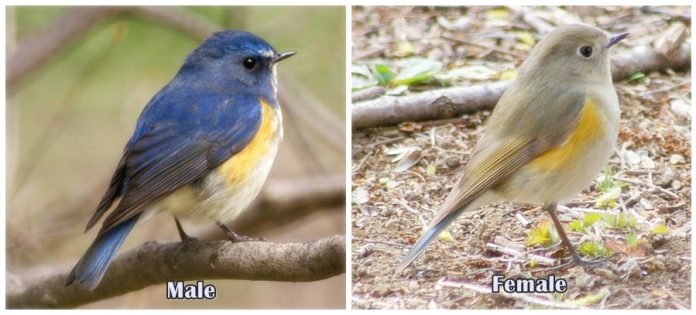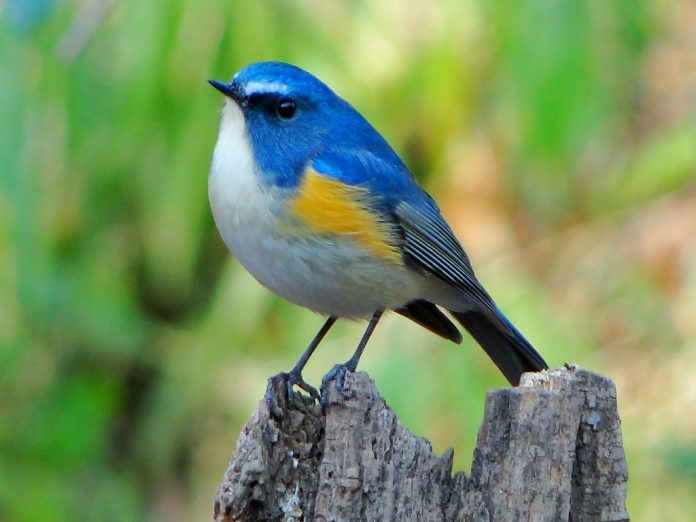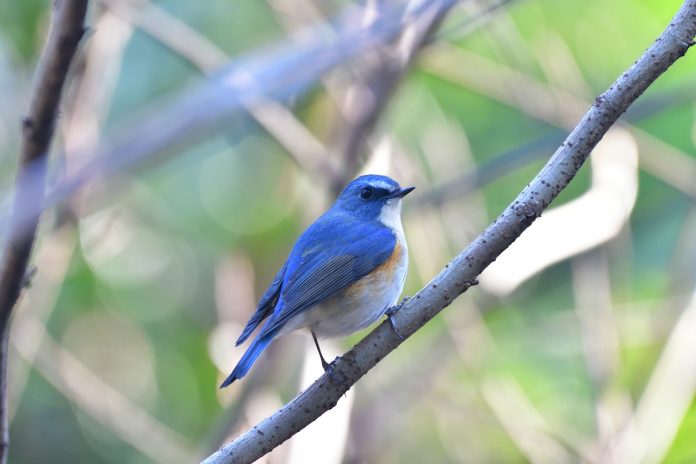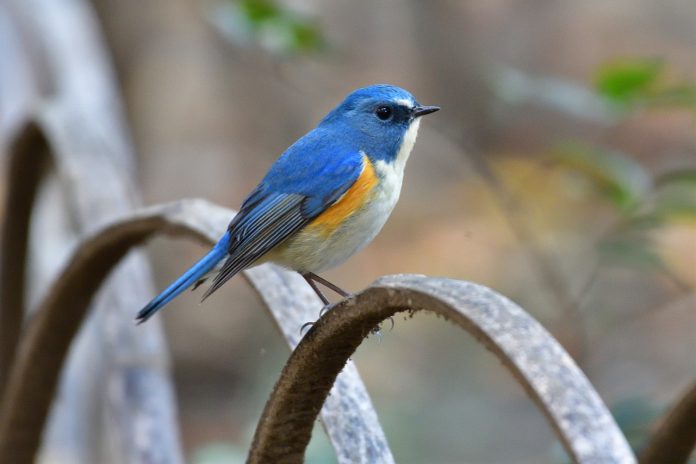The red-flanked bluetail (Tarsiger cyanurus) size is about 13-14 cm in length and 10-12g in weight. A chat of the taiga (i.e. boreal forest). The general structure recalls a small-billed redstart. It is also known as the Orange-flanked Bush Robin. It is considered one of the most old-world flycatchers. Adult male with its dark but bright blue upper parts and breast sides, orange flanks, and white throat center is unmistakable.
Often appears dark-throated unless seen from below or head-on, and in a deep shade of the forest, upper parts may appear merely dark. Female and first-year males (and maybe some adult males) have grayish-olive heads and upper parts, conspicuous white throat center, distinct pale eye-ring, blue rump, upper tail coverts and tail (most noticeable in flight), and characteristic orange flanks. Orange flanks avert confusion with more skulking Siberian Blue Robin.
The juvenile bird is heavily spotted like other small chats but has a blue tail. (Juvenile male Siberian Blue Robin shares this feature, but the tail is shorter when full-grown, and the blue is much less intense; in any case, latter species does not occur in juvenile plumage in our region.) Often feeds near the ground, hopping in European Robin-like fashion and flitting back into cover, or dropping on insects from perch and flying back in the manner of Common Redstart, but also forages in mid-story.
More cover-loving than the Common Redstart but less of an intense skulker than the genus Luscinia. A migratory insectivorous species’ breeding grounds are most easily located by distinguishing, far-carrying song, which is more often than not uttered from the top of a tall tree. Compare also female and immature White-throated Robin. Both sexes often differ, but many males resemble females.
These dull males are hard to sex but flank slightly brighter orange than in females and upper parts are often bluish-tinged with some blue in the wings. No noticeable seasonal variation, but in fresh plumage ‘classic’ males have olive fringes to blue feathering of the head and mantle. The beautiful juvenile bird is ‘spotted’, but with a blue tail.
The first years are much like adult females but the upper parts are warmer olive-brown, and less grayish-olive; young males often with some bluish wings. However, it does not attain full adult male plumage until the second winter and quite possibly many males never acquire ultimate male plumage.
The red-flanked bluetail call is similar to European Robin-like sharp ‘tictictic’, but also utters a low, soft ‘huit’ and a guttural ‘kerrr’ when alarmed. The song is insignificant but far-carrying, delivered from treetops (often at night): a series of thin, melancholy, rather Common Redstart-like or thrush-like phrases, sometimes ending in a roll or trill. It can be rendered ‘teteee-teeeleeee-titititi’, trailing away at the end. The male bird sings its melancholy trill from treetops. Its call is a typical chat “tacc” noise. The nest is built on or near the ground, with 3–5 eggs that are incubated by the female.
The red-flanked bluetail is a common bird in Eastern Europe but rare at the western edge of the range, with numbers varying annually. (In addition to the mapped range, breeds occasionally in Finland and has also bred in Estonia.) The birds spend winters in Southeast Asia.











